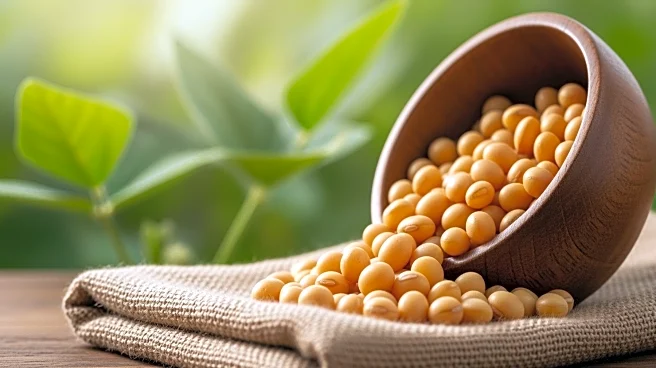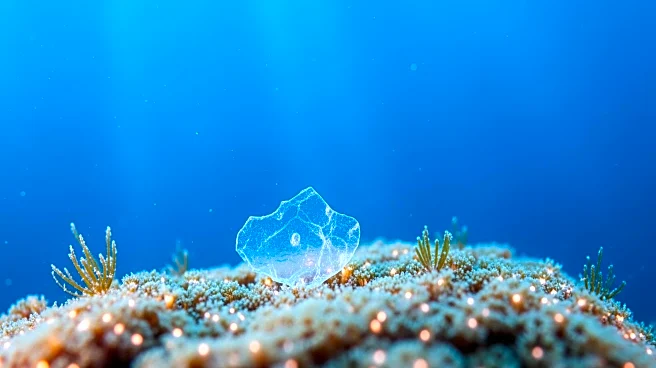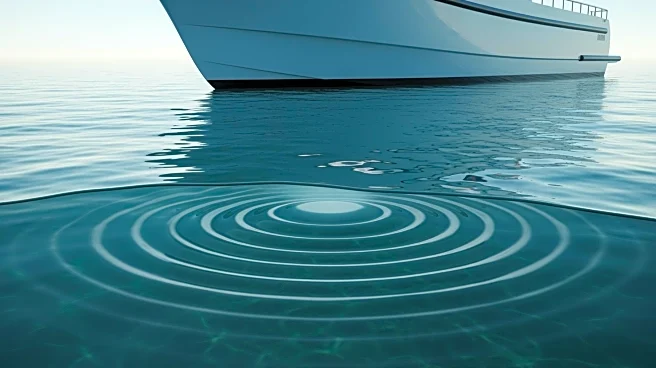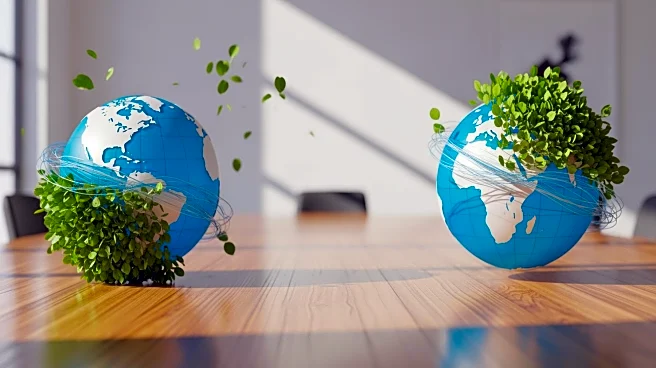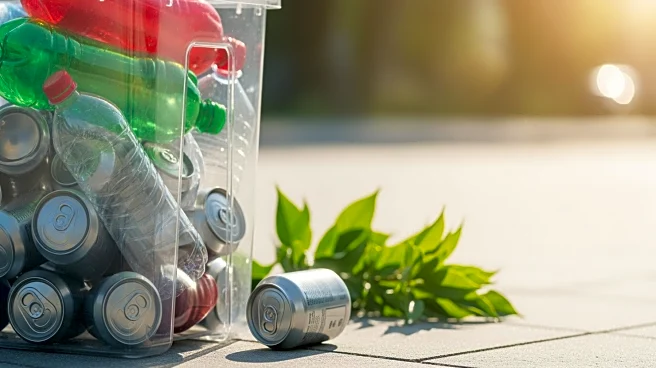What's Happening?
Recent research has quantified the lethal impact of plastic ingestion on marine animals, revealing that even small amounts can be deadly. The study found that just six pieces of ingested rubber can kill most sea birds, while 29 pieces of any type of plastic can be lethal to
marine mammals. This research, conducted by scientists from the University of Toronto and other institutions, analyzed data from over 10,000 necropsies of marine animals, including sea turtles, seabirds, and marine mammals. The findings highlight the severe physical harm caused by plastic ingestion, such as obstruction and perforation of airways and gastrointestinal tracts. The study emphasizes the urgent need for policy measures to reduce plastic pollution in oceans.
Why It's Important?
The implications of this research are profound for environmental policy and conservation efforts. By quantifying the lethal thresholds of plastic ingestion, the study provides critical data that can inform policy decisions aimed at reducing plastic pollution. This is particularly important as plastic waste continues to enter oceans at alarming rates, threatening marine biodiversity and ecosystems. The findings underscore the need for stricter regulations on plastic production and disposal, as well as increased efforts in recycling and cleanup initiatives. Protecting marine life from plastic pollution is essential for maintaining healthy ocean ecosystems, which are vital for global biodiversity and human livelihoods.
What's Next?
The study's authors hope that their findings will spur legislative action to reduce plastic pollution. Potential measures include bans on certain types of plastics, such as plastic bags and balloons, and support for local cleanup efforts. International talks on limiting plastic pollution are ongoing, but progress has been hindered by resistance from oil- and gas-producing countries. Continued advocacy and research are needed to push for effective policies that address the root causes of plastic pollution and promote sustainable alternatives.


